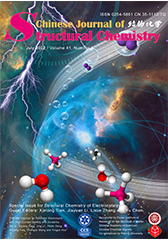
Cover Picture
P-Ni4Mo Catalyst for Seawater Electrolysis with High Current Density and Durability
Development of Transition Metal Nitrides as Oxygen and Hydrogen Electrocatalysts
Xuesheng Yan, Daijie Deng, Suqin Wu, Henan Li and Li Xu*
Chin.
J. Struct. Chem. 2022, 41, 2207004-2207015 DOI: 10.14102/j.cnki.0254-5861.2022-0036
July 18, 2022
transition metal nitrides, hydrogen, oxygen, improvement strategies, electrocatalysts
ABSTRACT
With
the increasing demand for energy, various emerging energy storage/conversion
technologies have gradually penetrated human life, providing numerous
conveniences. The practical application efficiency is often affected by the
slow kinetics of hydrogen or oxygen electrocatalytic reactions (hydrogen
evolution and oxidation reactions, oxygen evolution and reduction reactions)
among the emerging devices. Therefore, the researchers devote to finding
cost-effective electrocatalysts. Non-noble metal catalysts have low cost and
good catalytic activity, but poor stability, agglomeration, dissolution, and
other problems will occur after a long cycle, such as transition metal oxides
and carbides. Transition metal nitrides (TMNs) stand out among all kinds of
non-noble metal catalysts because of the intrinsic platinum-like
electrocatalytic activities, relatively high conductivity, and wide range of
tunability. In this review, the applications of TMNs in
electrocatalytic fields are summarized based on the number of metals contained
in TMNs. The practical application potentials of TMNs in fuel cell, water
splitting, zinc-air battery and other electrochemical energy storage/conversion
devices are also listed. Finally, the design strategies and viewpoints of
TMNs-based electrocatalyst are summarized. The potential challenges of
TMNs-based electrocatalyst in the development of electrocatalytic energy
devices in the future are prospected.







